Chikungunya is an infectious disease caused by the virus (CHIKV), primarily transmitted to humans through the bite of infected Aedes mosquitoes, particularly Aedes aegypti and Aedes albopictus. This blog delves into the origins, transmission, symptoms, diagnosis, treatment, and prevention of chikungunya.
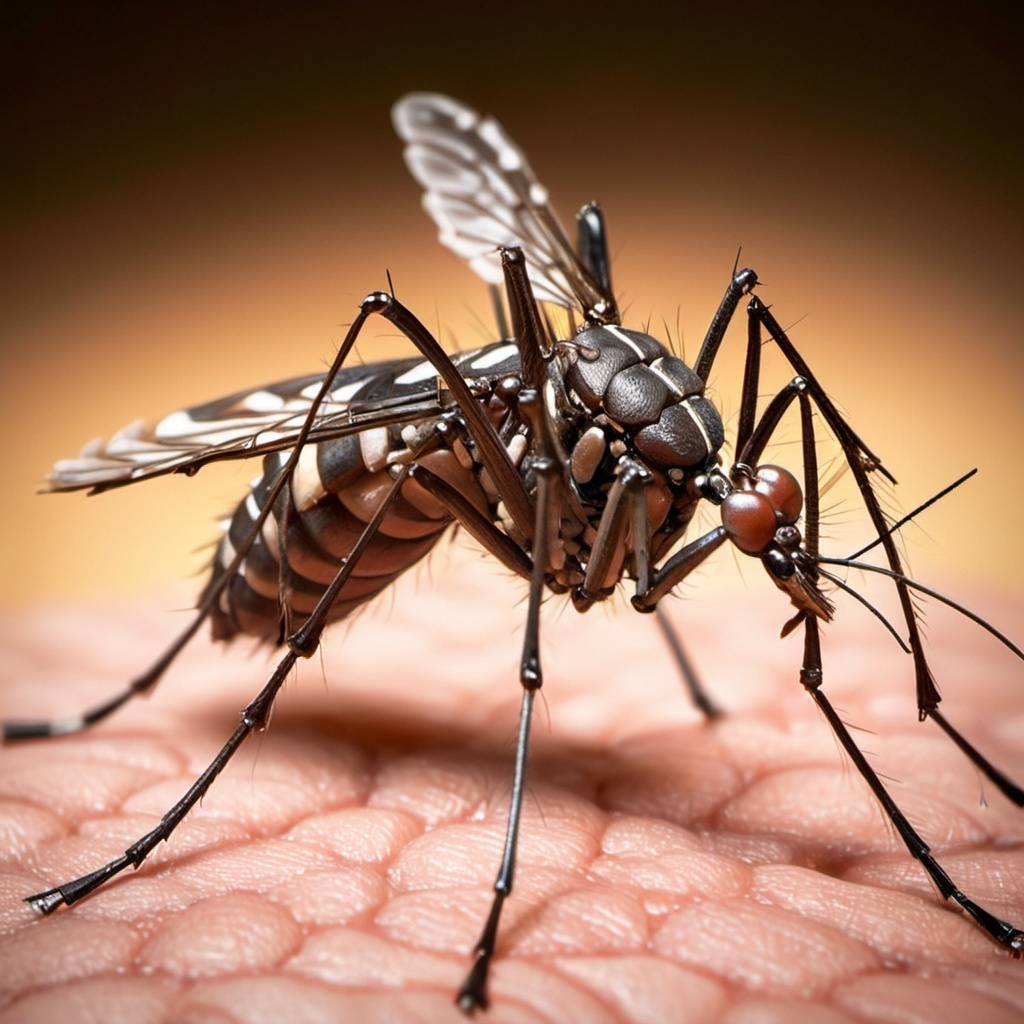
1. Overview of Chikungunya
What is Chikungunya?
Chikungunya is characterized by fever and severe joint pain, often leading to debilitating symptoms that can last for weeks or even months. The name “chikungunya” comes from a word in the Makonde language, meaning “to become contorted,” which reflects the stooped posture of sufferers.
History
was first identified in Tanzania in 1952. Since then, outbreaks have occurred in Africa, Asia, Europe, and the Americas. The disease has gained prominence in recent decades due to increased urbanization and the expansion of mosquito habitats.
2. Transmission of Chikungunya Virus
Mosquito Vectors
The primary vectors for chikungunya are:
- Aedes aegypti: Known for spreading diseases like dengue and Zika, this mosquito is typically found in urban areas and is most active during the day.
- Aedes albopictus: Commonly referred to as the Asian tiger mosquito, it can thrive in both urban and rural settings and is also day-active.
How It Spreads
virus is transmitted through the bite of an infected mosquito. The cycle typically involves:
- Mosquito Bite: Aedes mosquitoes feed on the blood of an infected person, becoming carriers of the virus.
- Human Infection: The virus is injected into the bloodstream of the next person the mosquito bites.
- Human to Mosquito: Infected individuals can transmit the virus back to mosquitoes, continuing the cycle.
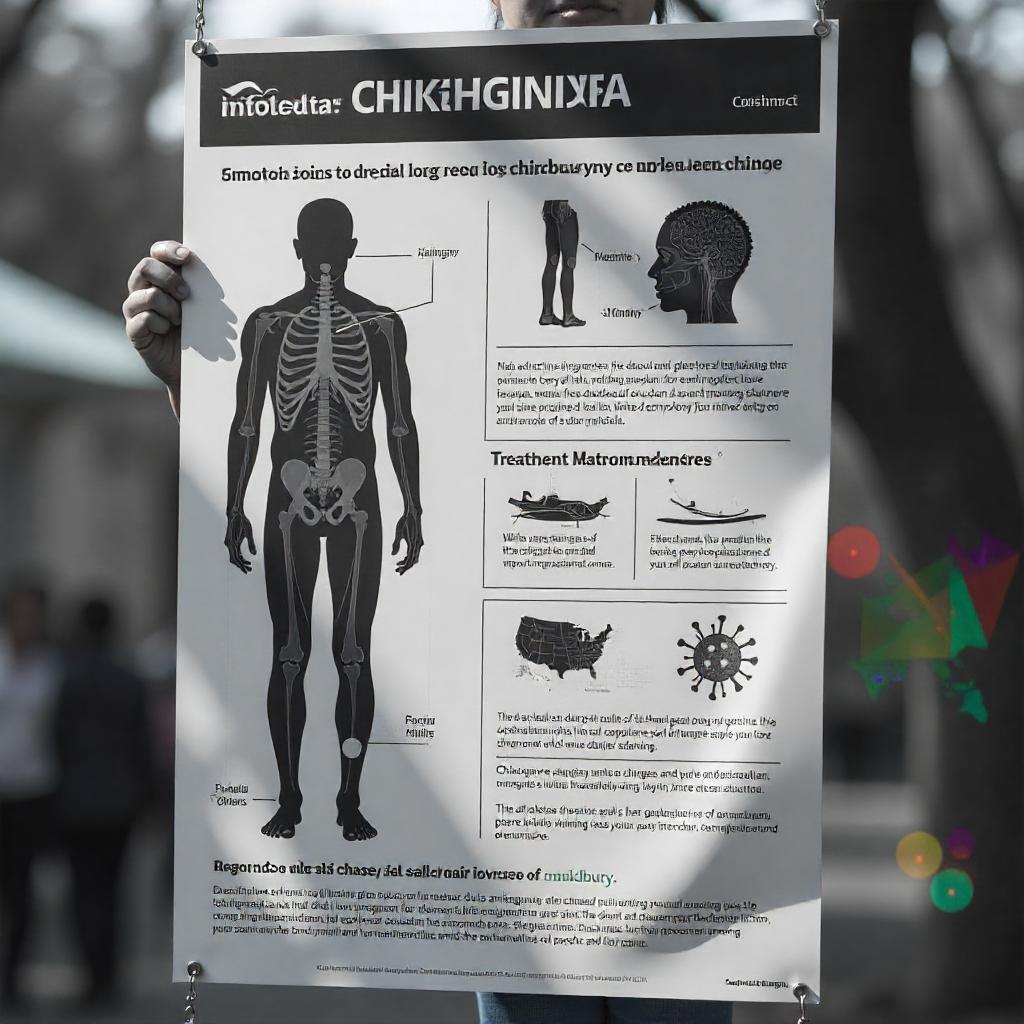
Chikungunya Zoonotic Transmission
While primarily spreads through mosquitoes, there is some evidence suggesting that other species, such as monkeys, can act as reservoirs for the virus.
3. Symptoms of Chikungunya
Initial Symptoms
Common initial symptoms include:
- High Fever: Sudden onset of fever, often exceeding 102°F (39°C).
- Joint Pain: Severe pain, particularly in the hands, wrists, ankles, and feet. This is often debilitating.
- Muscle Pain: Generalized muscle aches and pains.
- Headache: Severe headaches can accompany fever.
- Rash: A rash may develop, often affecting the trunk and limbs.
- Fatigue: Generalized weakness and fatigue are common.
Chikungunya Duration of Symptoms
While most symptoms resolve within a week, joint pain can persist for months or even years in some individuals, leading to chronic arthritis-like conditions.
Chikungunya Severe Cases
In rare instances, can lead to more severe symptoms, including:
- Neurological Disorders: Encephalitis or other neurological manifestations.
- Hemorrhagic Symptoms: Similar to dengue, though less common.
- Death: Extremely rare but possible, especially in individuals with underlying health conditions.
4. Diagnosis of Chikungunya
Chikungunya Clinical Diagnosis
Diagnosis is primarily based on clinical symptoms and recent travel history to endemic areas. Healthcare providers may consider in patients presenting with fever and joint pain, especially if they have been in areas with known outbreaks.
Laboratory Testing
Confirmatory tests include:
- Serological Tests: Detection of IgM and IgG antibodies against the chikungunya virus.
- PCR Testing: Polymerase chain reaction (PCR) tests can detect the virus in blood samples during the acute phase of the illness.
- Virus Isolation: Isolation of the virus from blood samples can also confirm the diagnosis.
5. Treatment of Chikungunya
Chikungunya No Specific Antiviral Treatment
Management focuses on relieving symptoms:
- Pain Relief: Non-steroidal anti-inflammatory drugs (NSAIDs) like ibuprofen or naproxen can alleviate pain and reduce fever. Aspirin should be avoided in viral infections due to the risk of bleeding.
- Hydration: Maintaining hydration is crucial, especially if fever is present.
- Rest: Adequate rest is recommended to help the body recover.
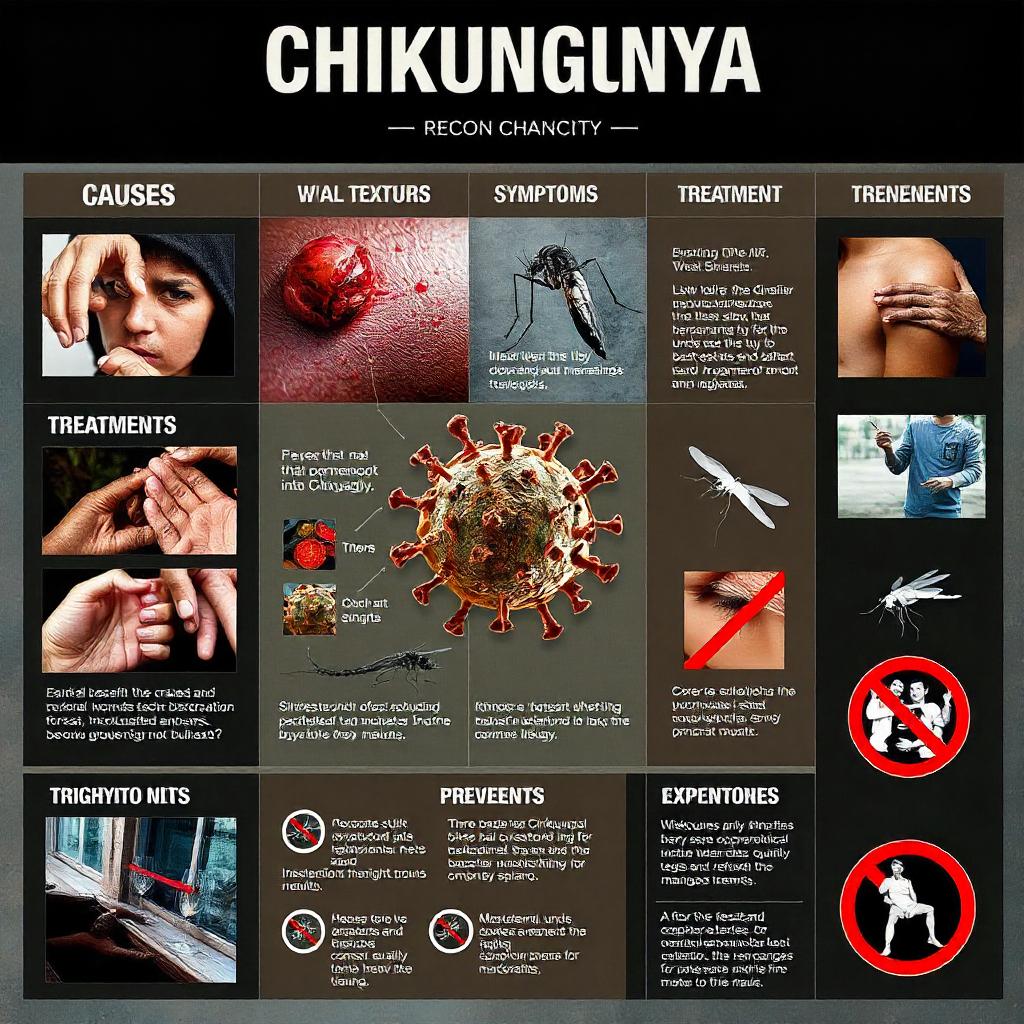
Long-term Management
For those experiencing prolonged joint pain, physical therapy and rehabilitation may be necessary. Disease-modifying antirheumatic drugs (DMARDs) or corticosteroids may be considered for severe cases with chronic joint pain.
6. Prevention of Chikungunya
Vector Control
Preventing primarily involves controlling mosquito populations:
- Eliminating Breeding Sites: Remove standing water from containers, tires, and other places where mosquitoes breed.
- Insecticides: Use of larvicides and adulticides can help reduce mosquito populations.
- Biological Control: Introducing natural predators or using genetically modified mosquitoes can reduce vector populations.
Personal Protection
Individuals can reduce their risk of infection by:
- Using Insect Repellents: Apply repellents containing DEET, picaridin, or oil of lemon eucalyptus on exposed skin.
- Wearing Protective Clothing: Long sleeves and pants can reduce mosquito bites.
- Using Mosquito Nets: Sleeping under mosquito nets, especially in areas where chikungunya is prevalent, can provide protection.
Public Health Measures
Public health education campaigns can raise awareness about chikungunya and encourage communities to engage in vector control measures. Surveillance of mosquito populations and human cases can help in early detection and response to outbreaks.
7. Living with Chikungunya
For many, chikungunya can be a painful and debilitating illness, particularly due to joint pain that lingers long after other symptoms have resolved. It’s essential for patients to seek support from healthcare providers, especially if experiencing chronic pain.
Emotional and Mental Health
Chronic pain can lead to emotional distress and mental health challenges. Support groups, counseling, and mental health resources can be beneficial for individuals coping with long-term symptoms.
Conclusion
Chikungunya is a viral illness that, while rarely fatal, can significantly impact quality of life due to its debilitating symptoms, particularly joint pain. Awareness and preventive measures are crucial in controlling outbreaks. As we continue to learn more about the virus and its effects, a concerted effort in vector control, public health education, and research will be vital in reducing the burden of chikungunya on affected populations.
Key Takeaways
- Stay Informed: Knowledge about chikungunya can help individuals take necessary precautions.
- Prevention is Key: Effective mosquito control and personal protection can significantly reduce the risk of infection.
- Seek Medical Advice: Early diagnosis and symptomatic treatment can aid recovery and minimize discomfort.
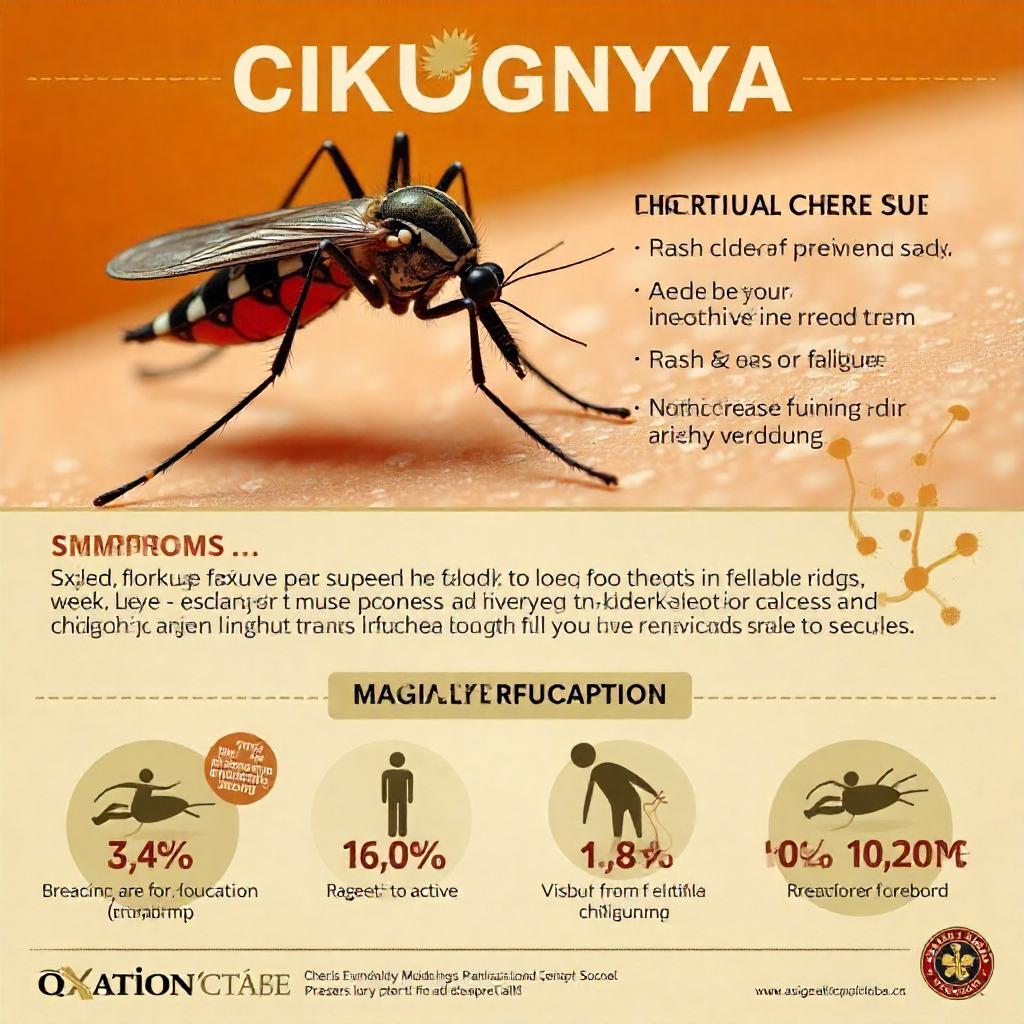
By understanding chikungunya, we can better prepare for and respond to this disease, ultimately leading to healthier communities and a reduced incidence of infection.
Chikungunya: Global Spread and Affected Countries
Chikungunya is a viral disease that has gained prominence in various regions across the globe. Its spread is closely tied to the distribution of Aedes mosquitoes, the primary vectors for the chikungunya virus. Below is a detailed overview of the countries and regions where chikungunya has spread, its history, and current outbreaks.
1. Historical Context
- Origin: Chikungunya was first identified in Tanzania in 1952. Since then, it has spread globally, with outbreaks occurring in Africa, Asia, Europe, and the Americas.
2. Regions Affected
Africa
- Countries: Tanzania, Kenya, Uganda, Mozambique, and several others.
- Details: The virus was initially endemic to East Africa, with significant outbreaks reported in the early 2000s.
Asia
- Countries: India, Sri Lanka, Indonesia, Thailand, Malaysia, and the Philippines.
- Details: India has reported several large outbreaks, especially in 2006 and 2016, affecting hundreds of thousands. The disease is also endemic in Southeast Asian countries.
Caribbean and Americas
- Countries: Puerto Rico, the Dominican Republic, Cuba, and several Central American nations like Honduras and Nicaragua.
- Details: The first outbreak in the Americas occurred in 2013 in the Caribbean. Since then, chikungunya has spread to mainland countries, including Brazil and Colombia, leading to significant public health challenges.
Europe
- Countries: France (especially the island of Réunion), Italy, and Spain.
- Details: Outbreaks have been linked to travelers returning from endemic areas, as well as local transmission in some regions.
3. Current Status of Chikungunya
Surveillance and Outbreaks
- Active Surveillance: Countries with prior outbreaks often have surveillance systems in place to monitor mosquito populations and human cases.
- Recent Outbreaks: In 2023, there have been reports of increased cases in regions like India, Indonesia, and parts of Africa. Public health measures are crucial to control these outbreaks.
4. Factors Contributing to Spread
- Urbanization: Increased urbanization provides breeding grounds for Aedes mosquitoes, facilitating virus transmission.
- Climate Change: Changes in climate patterns can expand the range of mosquito habitats, increasing the risk of chikungunya outbreaks in new areas.
- Global Travel: Increased travel can introduce the virus to non-endemic regions, leading to local transmission.
5. Prevention Strategies
- Public Health Initiatives: Countries affected by chikungunya often implement public health campaigns focusing on vector control and community education.
- Personal Protection: Individuals are encouraged to use insect repellents, wear protective clothing, and eliminate standing water to reduce mosquito breeding sites.
Conclusion
Chikungunya is a global health concern, with outbreaks documented in various countries across multiple continents. Understanding the regions affected, the history of the virus, and current prevention strategies is crucial in managing and mitigating the impact of chikungunya. Continued surveillance and public health efforts are essential in combating this viral disease and protecting at-risk populations.
Chikungunya has spread rapidly in Pakistan due to several interrelated factors:
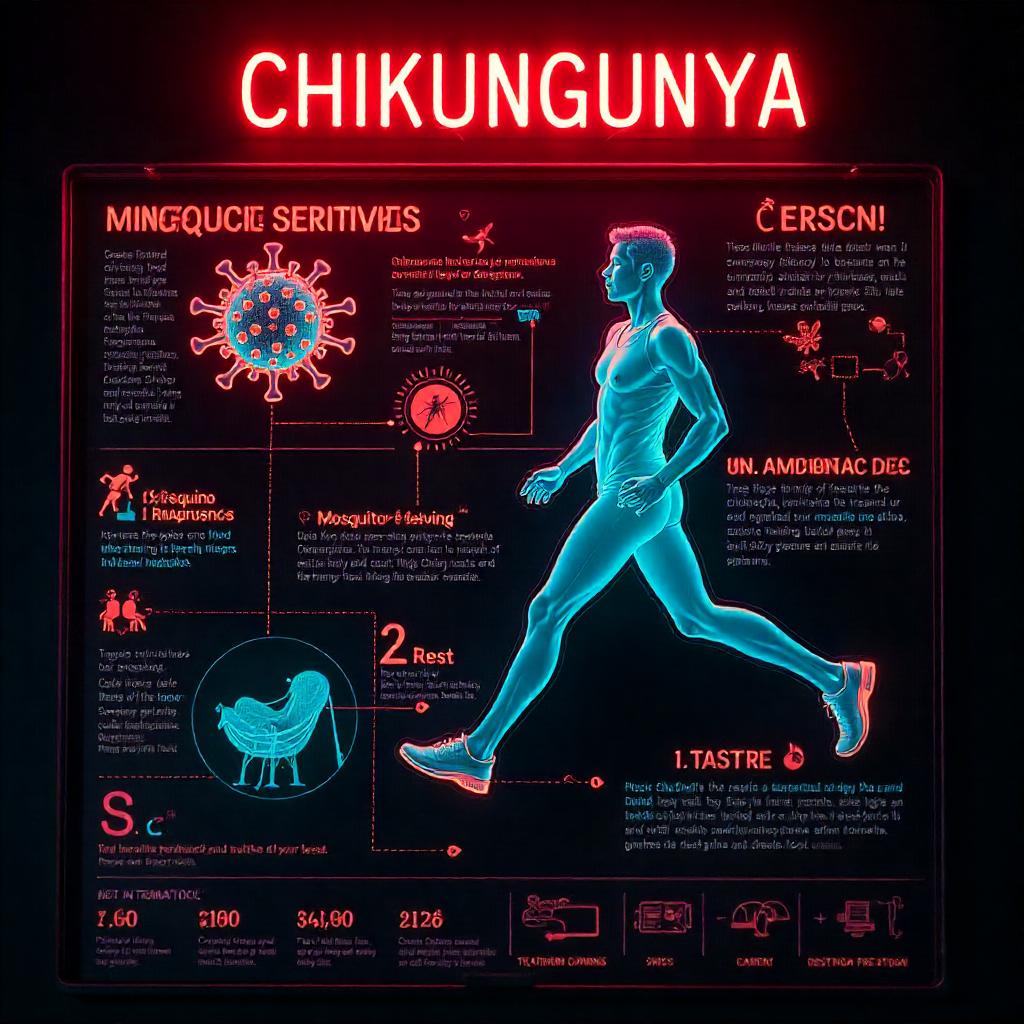
1. Climate and Geography
- Favorable Conditions: Pakistan’s warm climate, especially during the monsoon season, creates ideal breeding conditions for Aedes mosquitoes, the primary vectors of chikungunya. Standing water from rainfall allows these mosquitoes to proliferate.
2. Urbanization
- Rapid Urban Growth: Increasing urbanization in cities like Karachi and Lahore has led to inadequate drainage and sanitation systems. This results in stagnant water, which serves as breeding grounds for mosquitoes.
3. Public Health Infrastructure
- Limited Resources: The healthcare system in Pakistan often struggles with limited resources and infrastructure, affecting surveillance, mosquito control, and public health education efforts. This can delay responses to outbreaks.
4. Vector Control Challenges
- Inadequate Vector Control: Efforts to control mosquito populations, such as fumigation and community awareness programs, may be insufficient or poorly implemented. This allows mosquito populations to thrive.
5. Human Mobility
- High Population Density: With densely populated areas, the likelihood of rapid virus transmission increases. Additionally, travel within and outside the country can facilitate the introduction of the virus into new areas.
6. Lack of Awareness
- Public Awareness: There is often a lack of awareness about chikungunya among the general population, which can lead to delayed seeking of medical care and inadequate preventive measures.
7. Coinfection with Other Diseases
- Dengue and Malaria: The simultaneous presence of other mosquito-borne diseases like dengue fever complicates the healthcare response and can strain resources further.
Conclusion
These factors create a conducive environment for the rapid spread of chikungunya in Pakistan. Effective public health interventions, community engagement, and improved sanitation measures are crucial to controlling outbreaks and reducing the impact of the disease.

you’ve gotten an amazing blog right here! would you prefer to make some invite posts on my blog?
fantastic points altogether, you just received a emblem new reader. What would you recommend in regards to your publish that you made a few days in the past? Any sure?
We’re a bunch of volunteers and starting a brand new scheme in our community. Your website provided us with valuable information to paintings on. You’ve done a formidable task and our whole group might be thankful to you.
I love it when people come together and share opinions, great blog, keep it up.